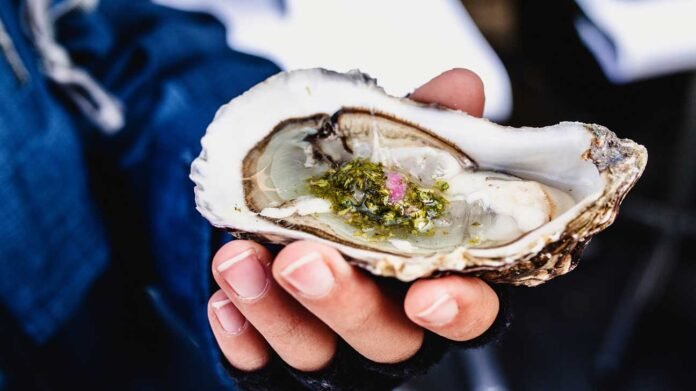Oysters are a cherished delicacy across the globe, known for their unique taste and texture. Whether consumed raw, steamed, fried, or baked, oysters offer a versatile culinary experience that can be both refined and deeply satisfying. This guide will take you through everything you need to know about eating oysters, from selection to consumption, ensuring you enjoy these marine morsels to their fullest.
What Are Oysters?
Oysters are bivalve mollusks found in marine habitats such as oceans and brackish waters. These shellfish are cultivated and harvested for food, playing a significant role in various culinary traditions. Oysters filter water to feed, which imparts them with the distinctive flavors of their environment, making each oyster’s taste uniquely reflective of its home waters.
Types of Oysters
There are numerous varieties of oysters, but they can generally be categorized into a few main types based on their origin:
- Pacific Oysters: Also known as Japanese oysters, these are larger with a sweeter, more delicate flavor.
- Atlantic Oysters: Typically found on the east coast of North America, these oysters have a more briny taste and a crisper texture.
- European Flat Oysters: Known for their smooth, subtle flavor and rounded, flat shells.
- Kumamoto Oysters: Small, sweet, and nutty, these oysters are a favorite among enthusiasts for their creamy texture and deep cup.
How to Select Oysters
When choosing oysters, freshness is paramount. Here are some tips for selecting the best oysters:
- Appearance: Fresh oysters should be closed tightly or closed when tapped. Avoid any that remain open.
- Smell: They should smell like the ocean, fresh and briny, not fishy.
- Shell condition: The shells should be intact and moist, a sign that the oysters are alive and fresh.
How to Prepare Oysters
Preparing oysters can be an enjoyable part of the eating experience. Here’s how to do it properly:
Cleaning
- Rinse them under cold water: This removes any loose debris or dirt from the shell.
- Scrub the shells: Using a stiff brush, scrub the shell to remove any algae, sand, or barnacles.
Shucking
Shucking oysters requires a special tool called an oyster knife and a bit of technique:
- Insert the knife: Place the tip of the oyster knife at the hinge of the oyster and twist to pry the shell open.
- Cut the muscle: Slide the knife along the inside of the upper shell to detach the oyster.
Serving
Oysters can be served on a bed of crushed ice with wedges of lemon, or with a variety of condiments such as mignonette sauce, cocktail sauce, or Tabasco.
How to Eat Oysters
Eating Raw
The most traditional way to enjoy oysters is raw. To do this:
- Inspect the oyster: Check for shell fragments and ensure the oyster is detached from the shell.
- Add condiments: A small spoonful of mignonette or a squeeze of lemon can enhance the flavor.
- Eat the oyster: Hold the shell to your lips, tilt, and let the oyster and its juices slide into your mouth. Chew lightly to savor the full flavor.
Other Popular Preparations
- Grilled Oysters: Top with butter, garlic, and herbs, and grill until bubbly.
- Oysters Rockefeller: Baked with a topping of buttery breadcrumbs, herbs, and spinach.
- Fried Oysters: Breaded and fried until golden, served with dips.
Conclusion
Eating oysters is an experience that combines flavor, texture, and the pleasure of connection to the sea. Whether you’re a first-timer or a seasoned connoisseur, understanding how to select, prepare, and enjoy oysters can significantly enhance your dining experience. With this guide, you’re well on your way to becoming an oyster expert. Enjoy the bounty of the sea with confidence and delight in the complex flavors that only oysters can provide.
